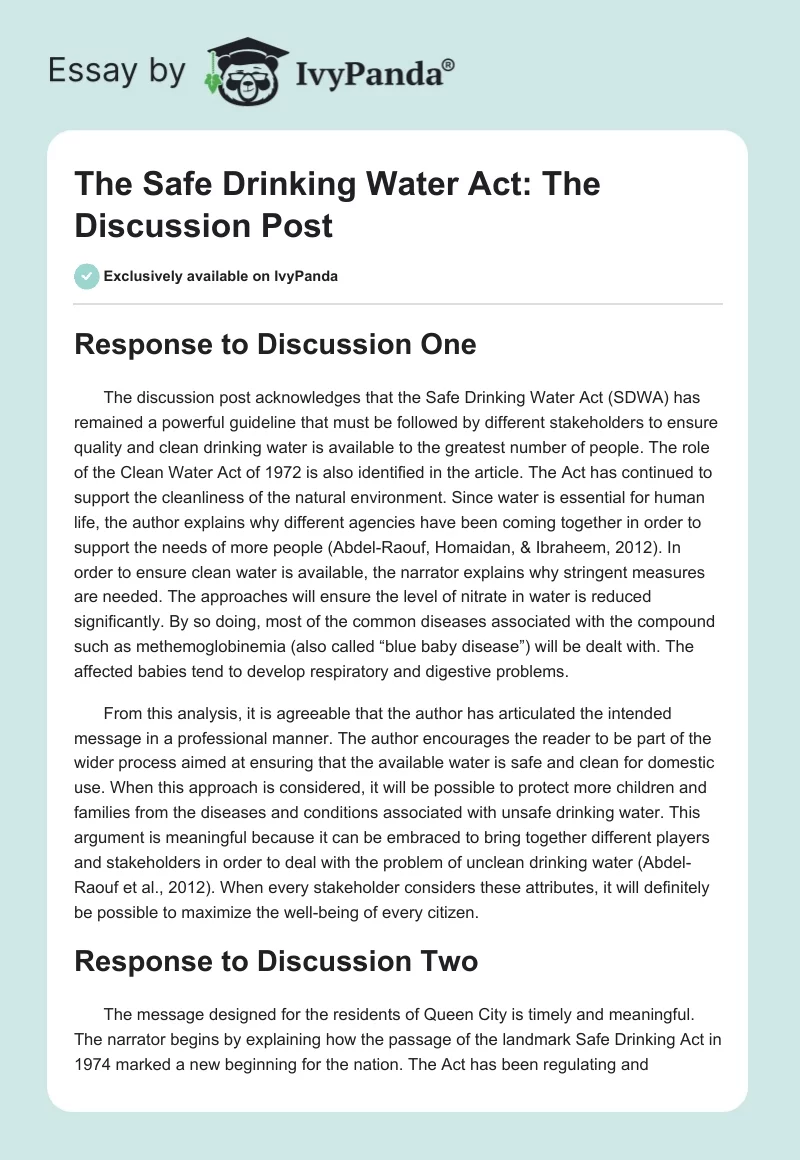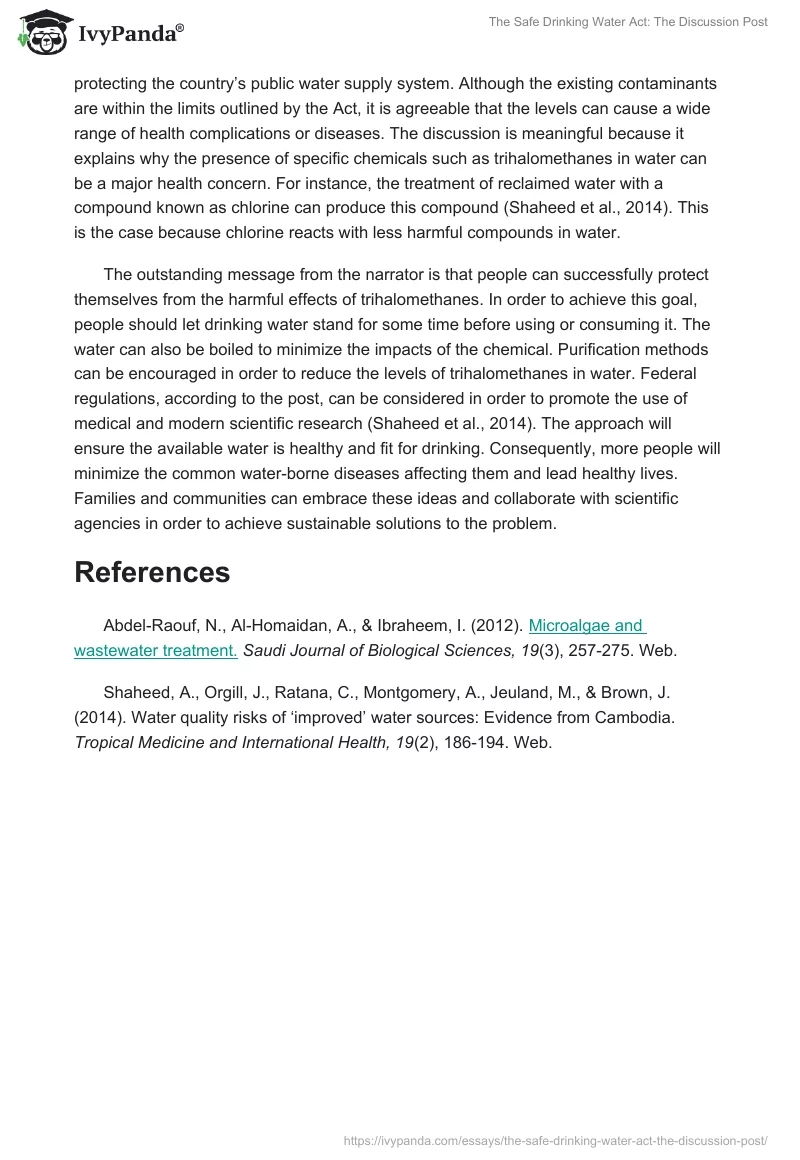Response to Discussion One
The discussion post acknowledges that the Safe Drinking Water Act (SDWA) has remained a powerful guideline that must be followed by different stakeholders to ensure quality and clean drinking water is available to the greatest number of people. The role of the Clean Water Act of 1972 is also identified in the article. The Act has continued to support the cleanliness of the natural environment. Since water is essential for human life, the author explains why different agencies have been coming together in order to support the needs of more people (Abdel-Raouf, Homaidan, & Ibraheem, 2012). In order to ensure clean water is available, the narrator explains why stringent measures are needed. The approaches will ensure the level of nitrate in water is reduced significantly. By so doing, most of the common diseases associated with the compound such as methemoglobinemia (also called “blue baby disease”) will be dealt with. The affected babies tend to develop respiratory and digestive problems.
From this analysis, it is agreeable that the author has articulated the intended message in a professional manner. The author encourages the reader to be part of the wider process aimed at ensuring that the available water is safe and clean for domestic use. When this approach is considered, it will be possible to protect more children and families from the diseases and conditions associated with unsafe drinking water. This argument is meaningful because it can be embraced to bring together different players and stakeholders in order to deal with the problem of unclean drinking water (Abdel-Raouf et al., 2012). When every stakeholder considers these attributes, it will definitely be possible to maximize the well-being of every citizen.
Response to Discussion Two
The message designed for the residents of Queen City is timely and meaningful. The narrator begins by explaining how the passage of the landmark Safe Drinking Act in 1974 marked a new beginning for the nation. The Act has been regulating and protecting the country’s public water supply system. Although the existing contaminants are within the limits outlined by the Act, it is agreeable that the levels can cause a wide range of health complications or diseases. The discussion is meaningful because it explains why the presence of specific chemicals such as trihalomethanes in water can be a major health concern. For instance, the treatment of reclaimed water with a compound known as chlorine can produce this compound (Shaheed et al., 2014). This is the case because chlorine reacts with less harmful compounds in water.
The outstanding message from the narrator is that people can successfully protect themselves from the harmful effects of trihalomethanes. In order to achieve this goal, people should let drinking water stand for some time before using or consuming it. The water can also be boiled to minimize the impacts of the chemical. Purification methods can be encouraged in order to reduce the levels of trihalomethanes in water. Federal regulations, according to the post, can be considered in order to promote the use of medical and modern scientific research (Shaheed et al., 2014). The approach will ensure the available water is healthy and fit for drinking. Consequently, more people will minimize the common water-borne diseases affecting them and lead healthy lives. Families and communities can embrace these ideas and collaborate with scientific agencies in order to achieve sustainable solutions to the problem.
References
Abdel-Raouf, N., Al-Homaidan, A., & Ibraheem, I. (2012). Microalgae and wastewater treatment. Saudi Journal of Biological Sciences, 19(3), 257-275. Web.
Shaheed, A., Orgill, J., Ratana, C., Montgomery, A., Jeuland, M., & Brown, J. (2014). Water quality risks of ‘improved’ water sources: Evidence from Cambodia. Tropical Medicine and International Health, 19(2), 186-194. Web.


